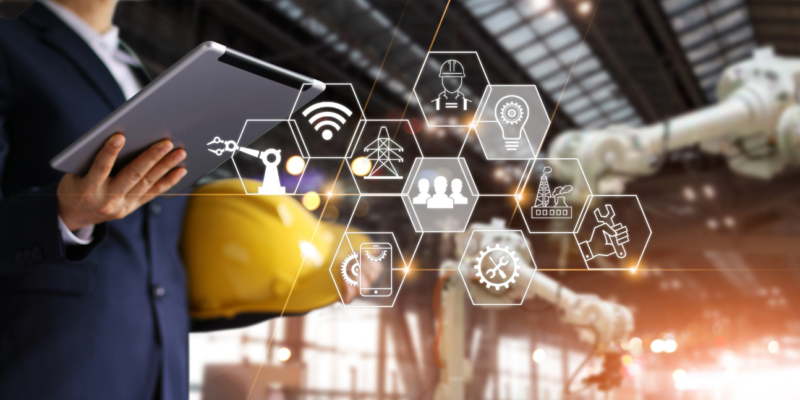“The engineering and construction industry has made a significant recovery from the 2020 recession, but it has also experienced multiple headwinds that are expected to persist. 2022 should be another rewarding—but challenging—year, and the industry looks to be poised to capture growth opportunities.”
Deloitte 2021 analysis
According to the Deloitte analysis, 76% of engineering and construction executives are going to invest in digital technology in 2022. Other studies show that adopting proven technology can improve construction productivity by 30-45%, as well as help maintain improved material predictability and reliability.
So what is “proven technology” and what specifically should we look at in 2022? Here are the 4 big trends in construction in 2022:
1. Drones
Drones are small, easy to use, and relatively cost-effective compared to other emerging construction technology. Their high resolution cameras can collect vital information and access all areas of a construction site. As a result, drones are extremely useful at every stage of the construction process for a variety of tasks:
- conduct site surveys
- collect important data
- take volume measurements
- create interactive 3D or topographical maps
- oversee workers
- perform safety inspections
- equipment tracking
- job site security
Drones can access hard-to-reach and dangerous places, preventing workplace injuries or project delays. They save significant time and money while reducing workplace injuries and increasing job satisfaction. Drones are also adaptable, working with other tech like AI or machine learning to always offer the best capabilities for your needs.
2. Exoskeletons & Wearables
Exoskeletons (wearable external suits with motorized joints) are becoming more widely available every year. These suits help with bending, lifting, and grabbing. Originally for recovering patients, these exoskeletons have expanded far beyond the physical therapy room to offer an array of performance-enhancing capabilites to improve safety and productivity in construction.
Specific wearable devices – like smart boots, smart hard hats, and power gloves – also provide an added layer of protection for workers across construction projects. These devices can predict and prevent workplace accidents through sensors, while also increasing dexterity and strength.
Over the past couple years, these devices also made it incredibly easy to do contact tracing and to prevent the spread of communicable diseases.
3. AI, Machine Learning, & Data Management
Tapping into the latest construction technology behind the scenes can have big payoffs.
Artificial intelligence (AI) is the ability for programmed software to make decisions independent of human input. Machine learning is when a computer program can learn from repeated inputs, honing its program and improving its output. Both of these ideas have already impacted many areas of construction and are shown to have massive impacts on productivity and safety. These kinds of programs can analyze job sites, past projects, and job plans to identify safety risks, prevent violations, identify more efficient timelines or project parameters, and explore better design options for future projects.
Like all businesses, construction is also realizing that effective data management is crucial to long-term business success. Smartphones, tablets, streamlined software, and effective data management policies reduce delays and costs, improve safety, streamline workflow, and enhance employee satisfaction. Explore your options with online forms, worksite smart devices, instant reporting, real-time safety corrections, and workflow automation.
4. Building Information Modeling (BIM) & Virtual Reality
BIM is the process of creating a virtual replica or model of a building before building it. This can be incredibly valuable in order to see dimensions, worksite conditions, possible safety hazards, and required logistics. It’s important during every stage of construction and touches all fields: executive management, worker actions, safety compliance, legal compliance, and more.
Virtual or augmented reality (AR) is a digital layer of information that updates in real-time and improves your understanding of the real world around you. Using an AR device can allow construction professionals to scan an actual job site and learn valuable information as an overlay on the image.
This could be through AR glasses, which can automatically measure whatever you’re looking at, or through a tablet to analyze the surrounding conditions and identify potential hazards.
By tapping into the current technology available, the construction industry can reduce the impacts of labor and supply shortages, improve safety and worker satisfaction, and significantly enhance productivity and revenue. Explore some new technology today!

